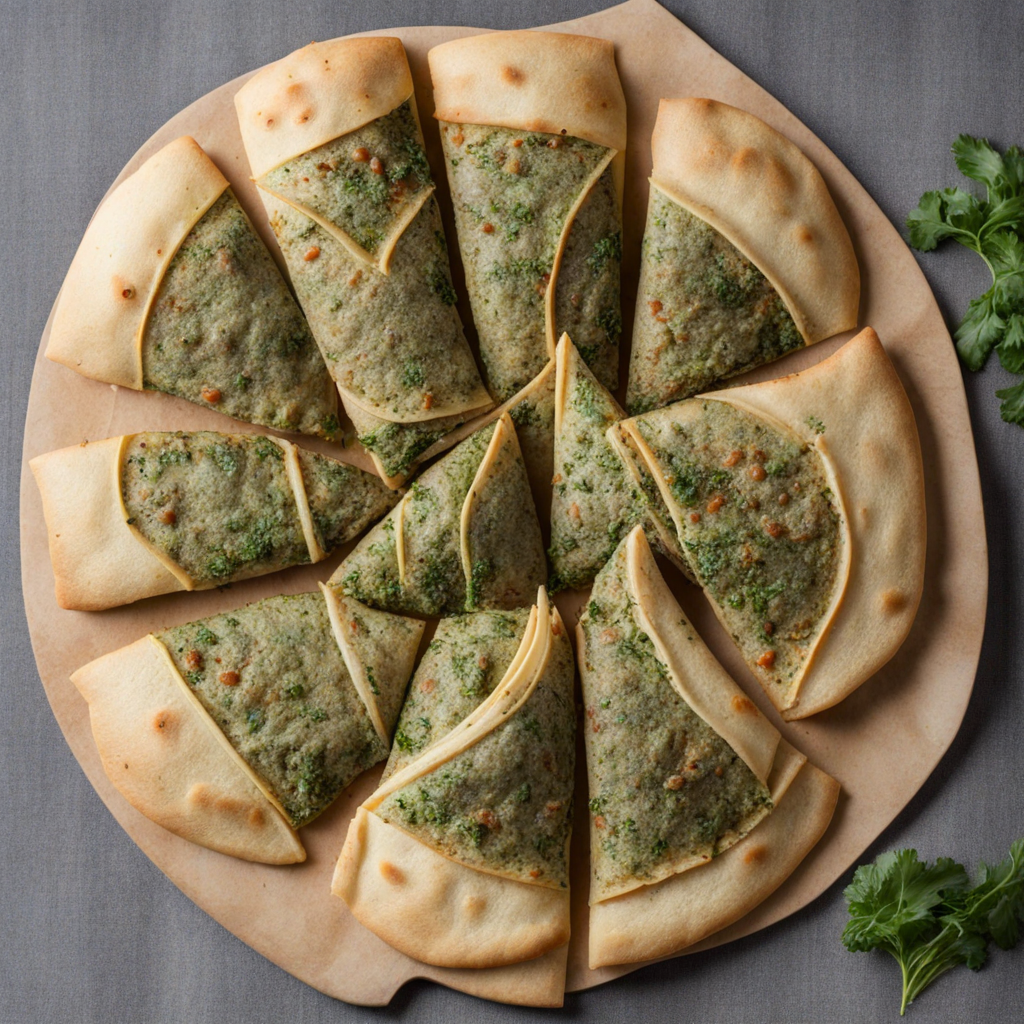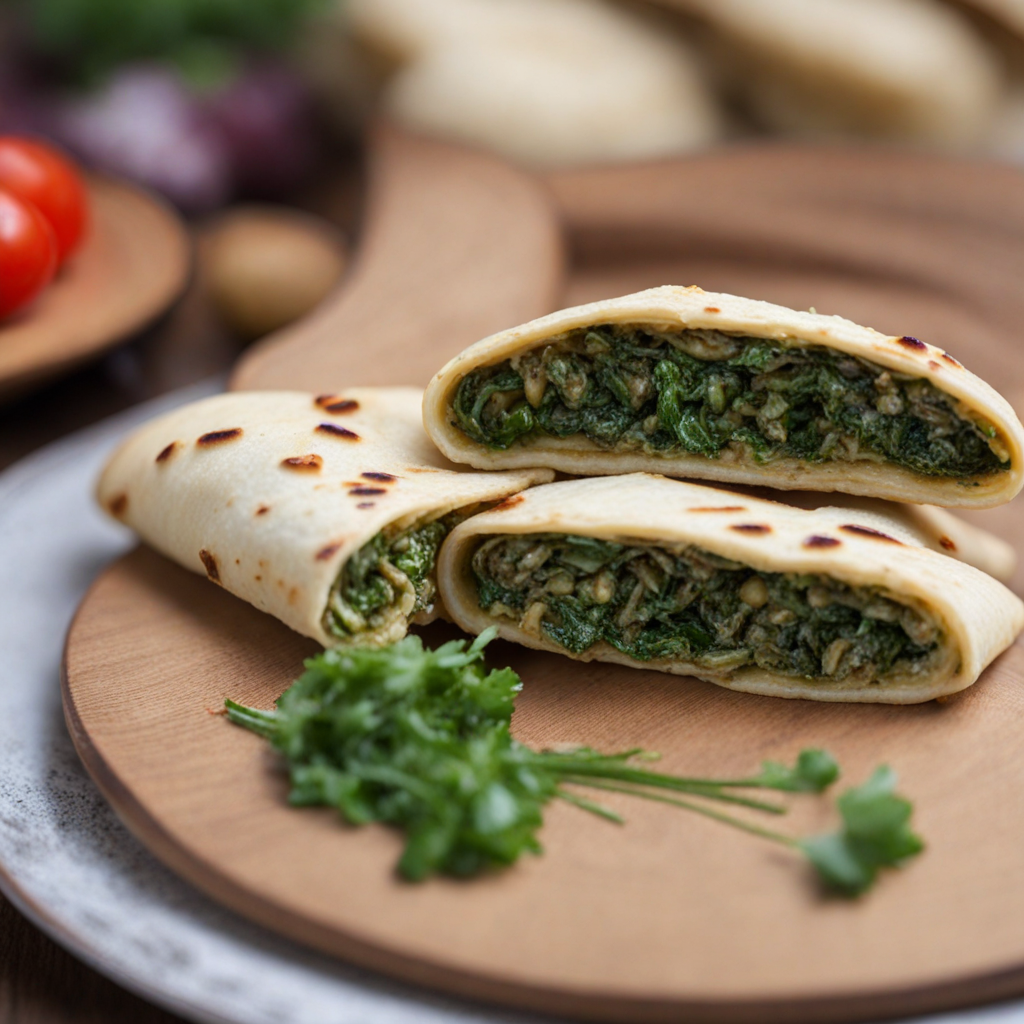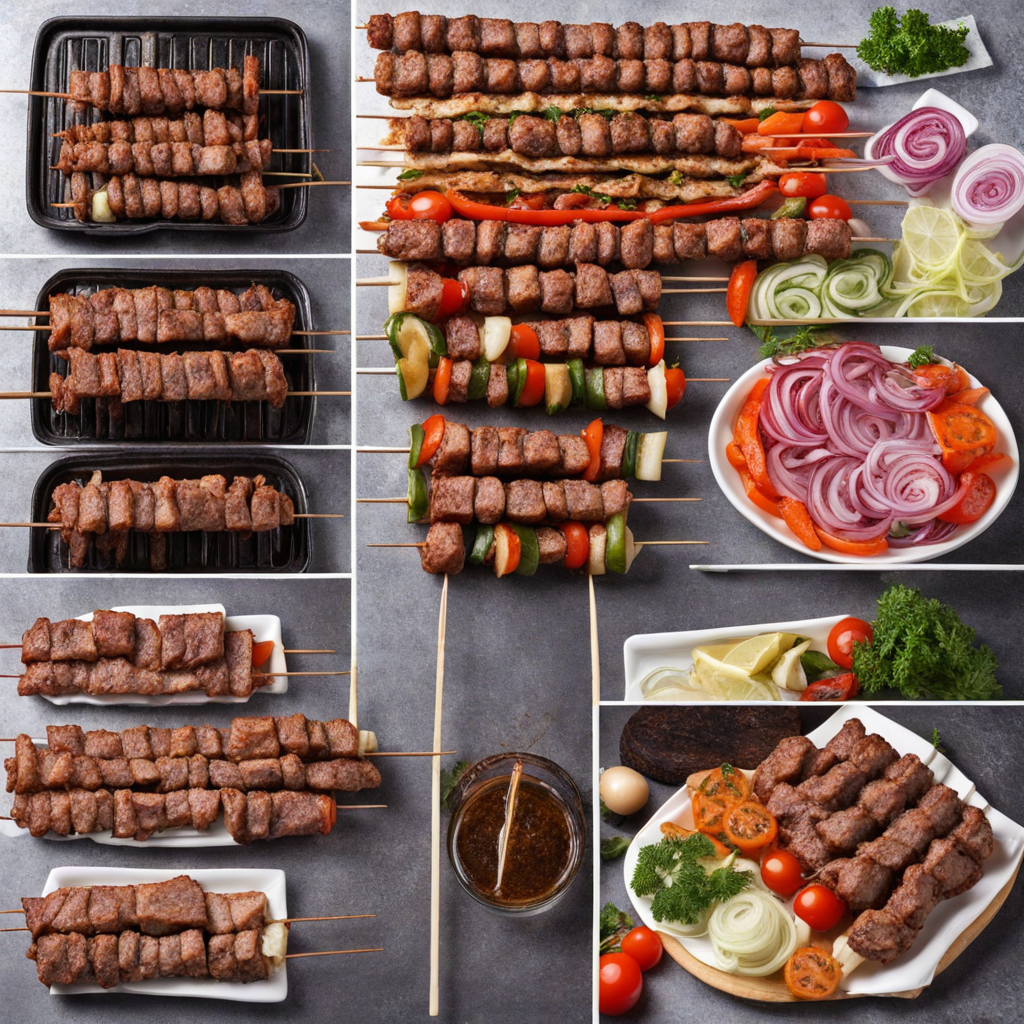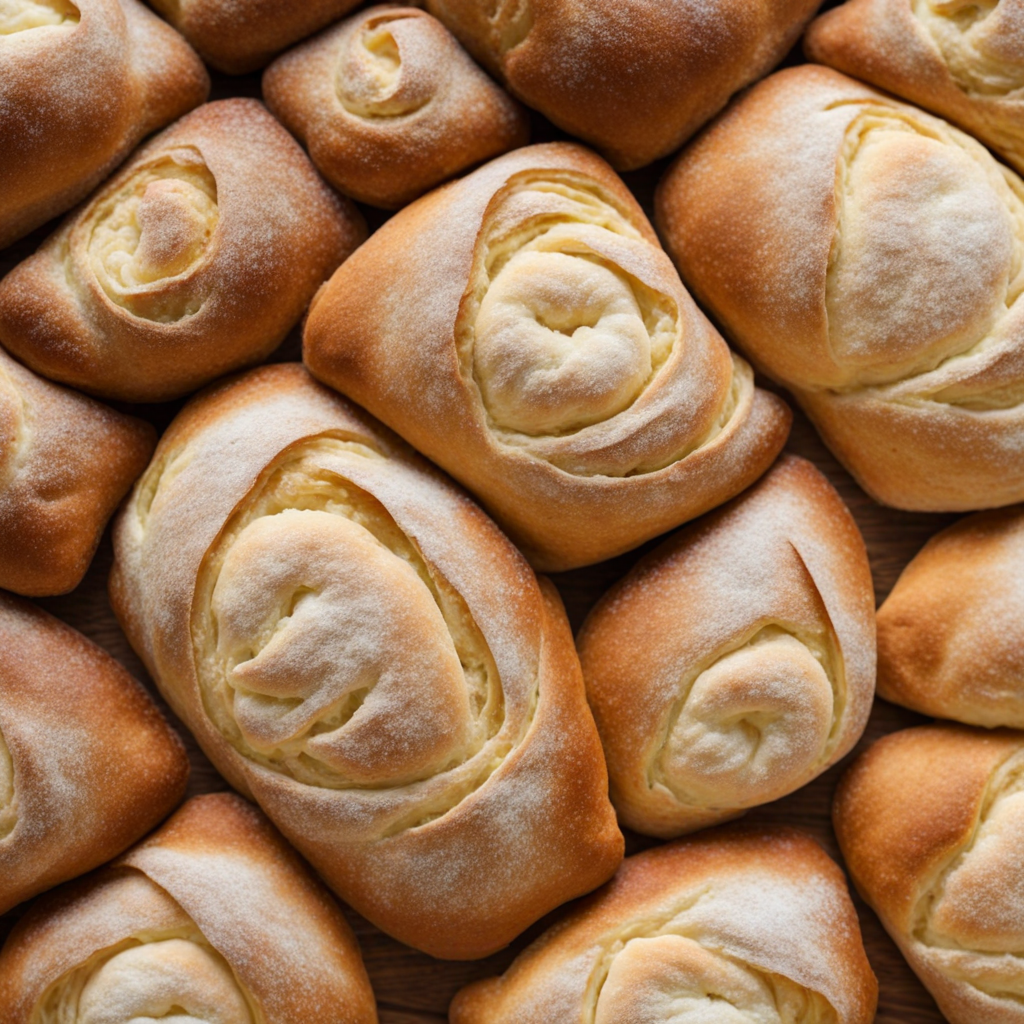Jingalov Hats
Jingalov Hats is a delightful traditional dish hailing from Armenia, celebrated for its unique combination of flavors and textures. This dish consists of a thin, soft flatbread that envelopes a vibrant filling of fresh herbs and greens. The key ingredients typically include a medley of greens such as spinach, chard, parsley, and dill, all finely chopped and seasoned. The freshness of the herbs is complemented by a drizzle of olive oil and a sprinkle of salt, creating a harmonious blend that is both refreshing and aromatic. The preparation of the flatbread is simple yet essential, as it must be cooked to a perfect golden-brown, providing the ideal vessel for the herbaceous filling. The cooking process of Jingalov Hats is an experience in itself, as the flatbread is often baked on a traditional stone or in a tandoor oven, lending it a unique texture and flavor. The result is a delightful contrast between the crispy outer layer and the soft, fragrant filling inside. Served warm, Jingalov Hats can be enjoyed as a main dish or a savory snack. It is often accompanied by yogurt or a tangy sauce, enhancing the overall taste experience and providing a cool counterpoint to the warm herbs. Each bite of Jingalov Hats is a celebration of simplicity and freshness, making it a perfect choice for those looking to explore new culinary horizons. The dish reflects the rich agricultural heritage of Armenia, showcasing the importance of fresh, locally-sourced ingredients. With its vibrant colors and enticing aromas, Jingalov Hats is more than just food; it’s a cultural experience that invites you to savor the essence of Armenian cuisine.
How It Became This Dish
Origin of Ժենգյալով հաց The history of Ժենգյալով հաց, or "Jengyalov hats," is deeply rooted in the culinary traditions of Armenia, particularly in the region of Artsakh (also known as Nagorno-Karabakh). This traditional flatbread is distinctive not only for its taste but also for its cultural significance. The name "Jengyalov" is derived from the word "jengyal," which refers to a variety of wild herbs that are abundant in the mountainous landscapes of the region. The bread itself is typically prepared using a simple dough made from flour and water, which is then rolled out to encase a rich filling of finely chopped herbs and greens. The origins of Jengyalov hats can be traced back to ancient Armenian agricultural practices, where foraging for wild herbs was a common activity among the rural population. The use of these herbs not only provided flavor but also nutritional benefits, as many of the wild plants are rich in vitamins and minerals. In a landscape where farming was often challenging due to harsh climates and mountainous terrain, using locally available resources became essential for survival. \n Cultural Significance In Armenian culture, food is integral to identity and community. Jengyalov hats exemplify this connection as they are often prepared for special occasions, gatherings, and family celebrations. The process of making this flatbread is a communal activity, bringing together family members and friends to share in the preparation and enjoyment of a meal. It is particularly popular during spring and summer when herbs are at their peak. The act of gathering fresh herbs from the fields becomes a cherished tradition, passed down through generations. Additionally, Jengyalov hats hold historical significance in the context of Armenian cuisine. They represent a blend of tradition and resourcefulness, showcasing how people adapted to their environment. As the Armenian diaspora spread across the globe, this dish served as a reminder of home, evoking feelings of nostalgia and cultural pride among Armenians living abroad. Many who emigrated took their culinary traditions with them, ensuring that the essence of Jengyalov hats would reach far beyond the borders of Armenia. \n Development Over Time Over the years, Jengyalov hats have evolved in both ingredients and preparation methods. Traditionally, the filling consisted of a variety of wild greens such as sorrel, dandelion leaves, and other local herbs. However, as availability of ingredients changed and culinary influences from neighboring regions seeped into Armenian cooking, new variations emerged. Today, cooks may include spinach, parsley, cilantro, or even more exotic herbs, reflecting a fusion of flavors while maintaining the essence of the dish. The baking process itself has also seen advancements. While the traditional method involves baking the flatbread in a tandoor (a clay oven), modern adaptations have made it possible to prepare Jengyalov hats in conventional ovens or even on stovetops. This flexibility has allowed the dish to remain relevant in contemporary kitchens, making it more accessible to those wishing to explore Armenian cuisine. \n Regional Variations Different regions of Armenia and Artsakh have developed their own unique takes on Jengyalov hats. In some areas, the bread may be prepared with a thicker crust, while in others, it is rolled out very thin. The filling can vary greatly depending on local herb availability and personal preference. For instance, some regions may favor a more herbaceous combination, while others may include additional ingredients like cheese or nuts for added flavor and texture. These regional variations are a testament to the adaptability of Jengyalov hats, and they highlight the creativity of Armenian cooks. As each family adds their own twist to the recipe, the dish continues to evolve, reflecting the local culture and agricultural practices. This adaptability has helped Jengyalov hats to endure, remaining a beloved staple in both traditional and modern Armenian homes. \n Modern Popularity and Revival In recent years, there has been a resurgence of interest in traditional Armenian cuisine, including Jengyalov hats. As the global food scene leans towards plant-based diets and locally sourced ingredients, this dish is perfectly positioned to capture the hearts of a new generation. Chefs and home cooks alike have begun to champion Jengyalov hats, incorporating them into menus at restaurants and culinary festivals, celebrating the rich flavors and cultural heritage they represent. Social media has also played a pivotal role in popularizing Jengyalov hats beyond Armenian communities. Food bloggers and influencers have showcased the process of making this flatbread, providing step-by-step guides that inspire others to try their hand at it. This digital exposure has fostered a renewed appreciation for Armenian culinary traditions, encouraging people from diverse backgrounds to explore and share in the experience of making and enjoying Jengyalov hats. \n Conclusion: A Culinary Legacy Jengyalov hats embody more than just a delicious flatbread; they are a symbol of Armenian resilience, resourcefulness, and community spirit. As they continue to be prepared and enjoyed in homes and restaurants, they serve as a reminder of the rich agricultural heritage of Armenia and the importance of preserving traditional practices. This culinary legacy will undoubtedly be cherished by future generations, ensuring that the flavors and stories of Jengyalov hats remain a vibrant part of Armenian culture for years to come.
You may like
Discover local flavors from Armenia







